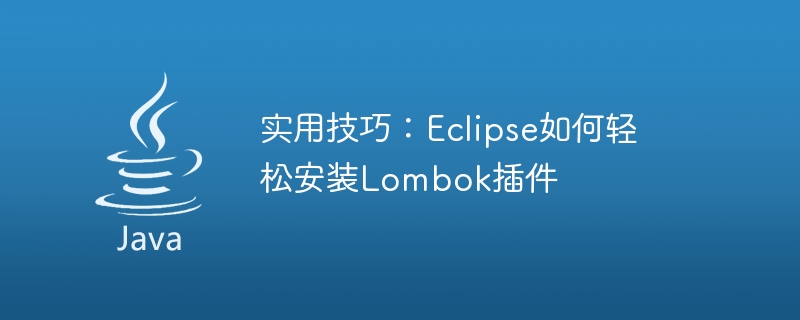

Practical tips: How to easily install the Lombok plug-in in Eclipse, specific code examples are required
In daily Java development, we often use Eclipse as the main integrated development environment. In actual development, we may encounter some tedious operations, such as manual writing of Getter and Setter methods. To simplify these operations, we can use the Lombok plug-in to automatically help us generate these codes. The following will introduce how to easily install and configure the Lombok plug-in in Eclipse, and provide specific code examples.
First, we need to download the jar file of the Lombok plug-in from the Eclipse official website. The download address is: https://projectlombok.org/
After the download is completed, we open Eclipse, enter the "Help" menu, and select the "Eclipse Marketplace" option. In the pop-up dialog box, we can search for the "Lombok" keyword, find the Lombok plug-in and click the "Go" button to search.
In the search results list, find the Lombok plug-in and click the "Install" button on the right. Next, Eclipse will automatically download and install the plug-in. After the installation is complete, you need to restart Eclipse for the plug-in to take effect.
After the installation is completed, we can use the Lombok plug-in in Java projects. Before giving specific examples, first introduce the dependencies of the Lombok plug-in. Add the following dependency code in the project's pom.xml file:
org.projectlombok lombok 1.18.20 provided
Next, we demonstrate the use of the Lombok plug-in through a simple example.
import lombok.Data; @Data public class User { private String name; private int age; }
In the above code, we use the @Data annotation. This annotation can help us automatically generate Getter and Setter methods, as well as toString, equals, hashCode and other methods. In this way, we don't need to write these tedious codes manually.
When using the Lombok plug-in, you need to ensure that the annotation processor is enabled in the Eclipse settings. The specific setting method is as follows: Enter the "Eclipse" menu, select the "Preferences" option, in the pop-up dialog box, select the "Java" folder, and then select the "Compiler" subfolder. In the right panel, check the "Enable annotation processing" option.
Through the above operations, we have successfully installed and configured the Lombok plug-in. Now, we can use annotations to simplify code and improve development efficiency. When we need to use Getter and Setter methods, we only need to add the @Data annotation as in the sample code. In this way, we can easily implement code simplification and optimization.
To summarize, the Lombok plug-in is a very practical tool that can help us save time and energy in writing tedious code. By installing and configuring the Lombok plug-in and using the annotations, we can easily simplify and optimize the code. I believe that through this practical technique, our development efficiency will be greatly improved.
(Note: The jar package version and code in the above example are just a demonstration, the specific version and code that your project actually needs shall prevail.)
The above is the detailed content of Easy installation: Tips for installing Lombok plug-in in Eclipse. For more information, please follow other related articles on the PHP Chinese website!




